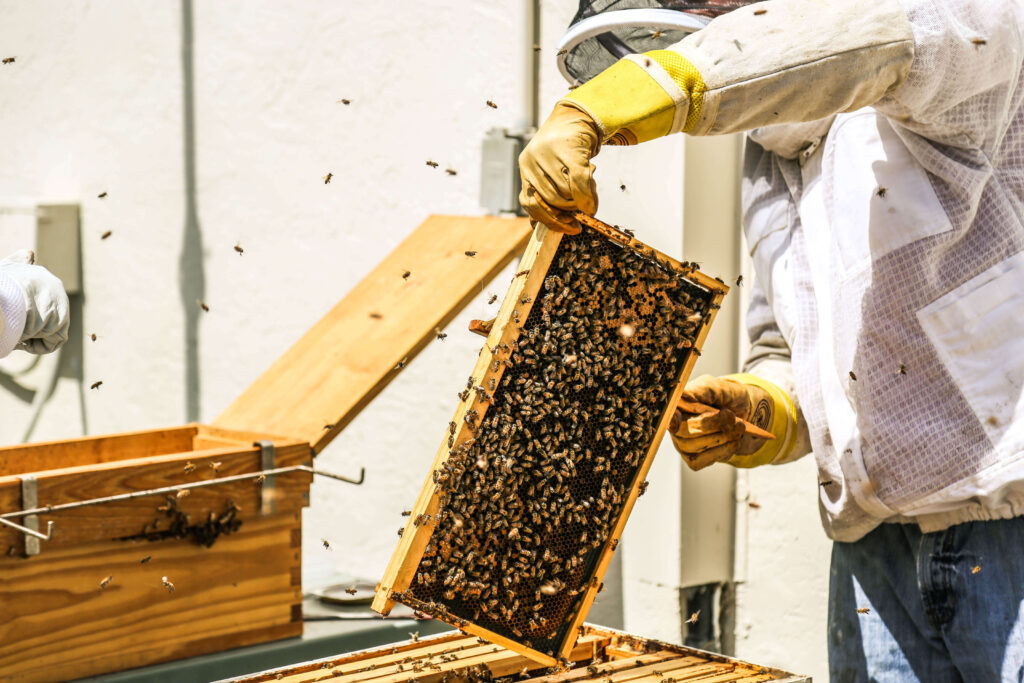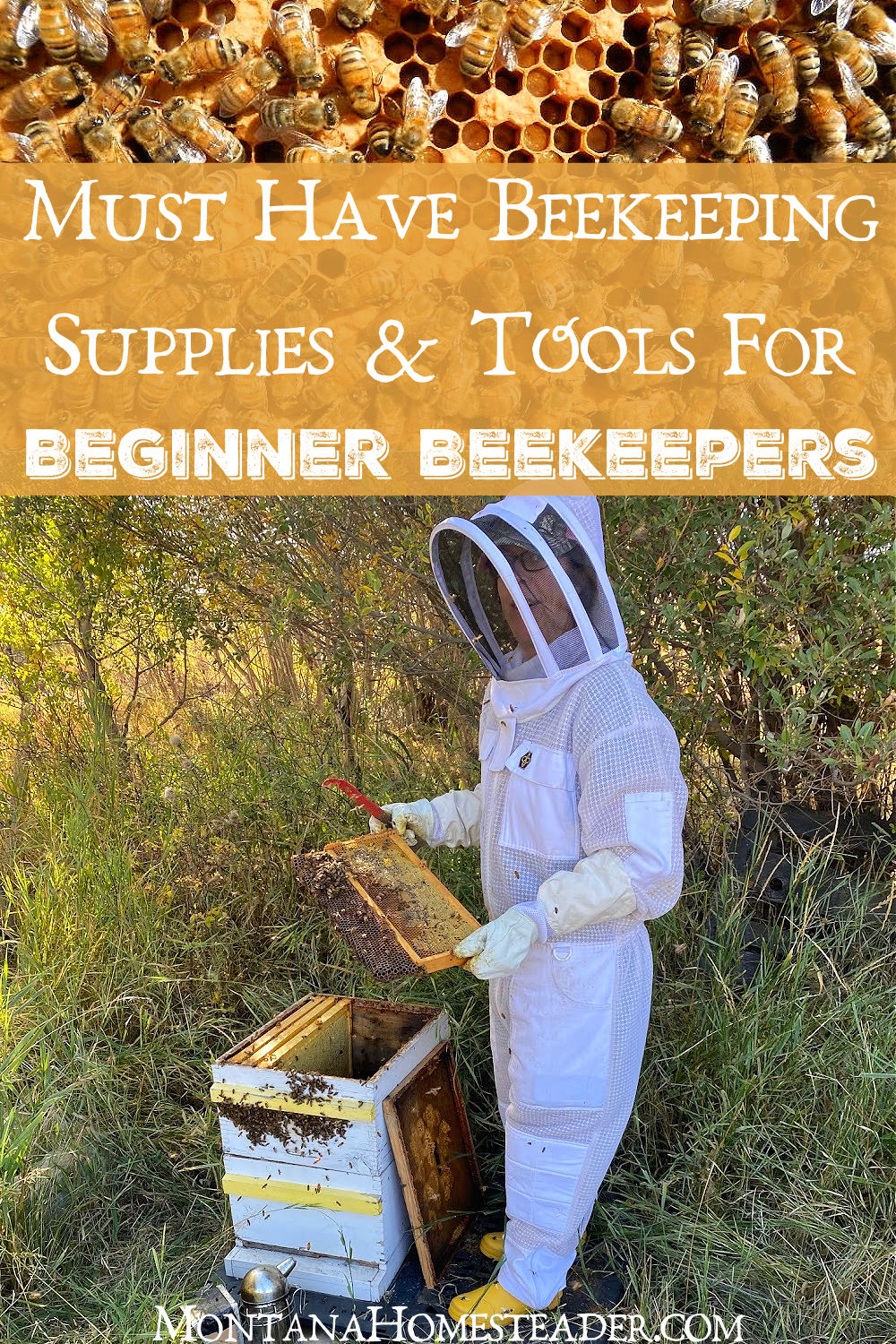
Are you considering delving into the world of beekeeping? If so, it’s crucial to start strong with the right equipment. Whether you’re a beginner or a seasoned beekeeper, having the right tools at your disposal can make all the difference in the success of your beekeeping venture. From protective clothing to hives and hive tools, this article will guide you through the top equipment choices that will set you on the path to becoming a successful beekeeper. So, let’s get started on your journey into the fascinating world of beekeeping!
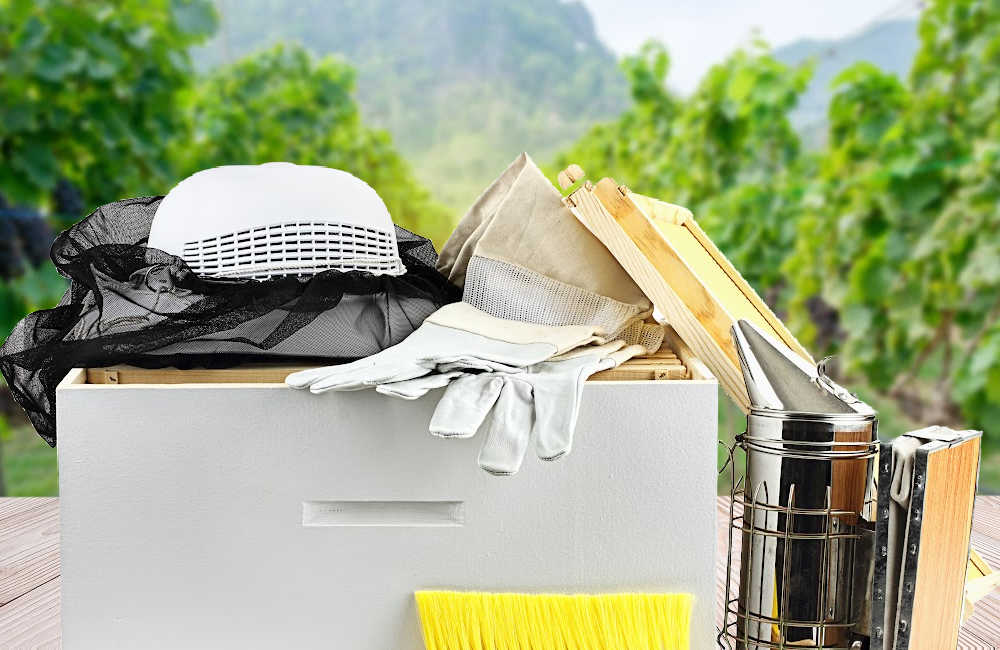
Protective Clothing
Bee Suit
When it comes to beekeeping, your safety is of utmost importance. That’s why investing in a bee suit is crucial. A bee suit is a full-body suit that provides protection from bee stings. It typically includes a jumpsuit, a detachable hood, and veil. The jumpsuit is designed to cover your entire body, including your arms and legs, while the hood and veil protect your face and neck. Opt for a bee suit that is made from a lightweight, breathable material, as beekeeping can be quite a physically demanding activity.
Beekeeping Gloves
In addition to a bee suit, beekeeping gloves are essential for protecting your hands. Beekeeping gloves are typically made from leather or PVC material to provide a sturdy barrier between your skin and the bees. They should fit snugly but allow for comfortable movement of your fingers and hands. Look for gloves that have long cuffs to ensure that no gaps are exposed between the suit and gloves.
Veil and Hat
To shield your face and neck from bee stings, a veil and hat combination is a must-have accessory. The veil is typically made from a fine mesh material that allows for visibility while keeping bees at a safe distance. It is important to ensure that the veil is securely attached to the hat to prevent any bees from accessing your face. A wide-brimmed hat helps to provide additional protection and shade, keeping the bees away from your head.
Boots
To complete your protective clothing ensemble, don’t forget a pair of sturdy boots. Opt for boots that are ankle-high and made from a durable material, such as rubber. These boots will provide an extra layer of protection for your feet and ankles, ensuring that no bees can find their way inside your suit.
Hives and Components
Hive Bodies
Hive bodies, also known as brood boxes, are the main components of a beehive. They consist of wooden boxes where the bees build their honeycombs and rear their brood. Hive bodies are usually made of pine or cedar wood and come in various sizes. Be sure to select hive bodies that are compatible with the frames and foundation you choose to use.
Frames and Foundation
Frames and foundation are essential components within the hive bodies. Frames provide structure and support for the honeycombs, while the foundation is where the bees build their honeycomb. Frames can be made from wood or plastic, with plastic frames offering more durability and easier inspection. Foundation, typically made from beeswax or plastic, provides a guide for the bees to build their honeycomb.
Inner Cover
The inner cover is a crucial part of a beehive as it helps to regulate the temperature and humidity within the hive. It also provides an additional barrier between the hive bodies and outer cover, preventing heat loss and excess moisture. Inner covers typically have a small entrance hole, allowing the bees to come and go from the hive.
Outer Cover
The outer cover is the topmost component of the beehive, providing protection from the elements. It acts as a roof to keep the hive dry during rainstorms and insulates the hive during colder months. Outer covers are usually made of wood or metal and should be waterproof and sturdy to withstand the weather conditions in your area.
Bottom Board
The bottom board is the base of the beehive, and it serves as the entrance and exit point for the bees. It also protects the hive from dampness and pests. Bottom boards typically have a small entrance opening that can be adjusted to control the hive’s ventilation and security.
Queen Excluder
A queen excluder is a mesh or wire grid that is placed between the hive bodies to prevent the queen bee from laying eggs in certain areas, such as honey supers. This encourages the bees to store honey in specific sections of the hive, making it easier for beekeepers to extract honey without having to worry about brood contamination.
Tools and Accessories
Smoker
A smoker is an essential tool for beekeepers as it helps to calm the bees during hive inspections. The smoke emitted from the smoker masks the bees’ alarm pheromone, making them less likely to defend their hive. Smokers are typically made of stainless steel or galvanized metal and are filled with materials such as pine needles or wood chips to produce smoke.
Hive Tool
A hive tool is a versatile tool that every beekeeper should have. It is used to pry open hive bodies, separate frames, and scrape off excess propolis or beeswax. Hive tools are usually made of stainless steel or galvanized metal and come in different shapes, such as J-shaped or curved, to accommodate various hive tasks.
Bee Brush
A bee brush is a gentle tool that allows beekeepers to gently brush bees off frames, honeycombs, or any surface without harming them. It is typically made of soft bristles, such as horsehair, and has a long handle to keep you at a safe distance from the bees. Bee brushes are helpful when managing bees during hive inspections or when removing excess bees from honey supers.
Feeder
Feeding your bees is essential, especially during periods of nectar dearth or when establishing new colonies. Various types of feeders are available, including entrance feeders, top feeders, and frame feeders. Each type has its advantages and disadvantages, so choose one that suits your beekeeping needs and hive setup.
Honey Extractor
Once your bees have produced honey, a honey extractor is a must-have tool for extracting the liquid gold from the honeycombs. Honey extractors come in manual and electric models, allowing you to spin the frames and extract honey without damaging the honeycomb. They come in different sizes to accommodate the number of frames you want to extract at a time.
Honey Extraction Equipment
Uncapping Knife
An uncapping knife is used to remove the wax cappings from the honeycomb before extraction. It cuts through the wax effectively, exposing the honey for extraction. Uncapping knives are typically heated for smoother capping removal, and they come in different blade lengths and styles to suit your preference.
Uncapping Tank
An uncapping tank is a container designed to collect the wax cappings during the uncapping process. It usually has a mesh or sieve that allows the honey to separate from the wax, ensuring a clean harvest. Uncapping tanks also serve as storage containers for the wax, which can be further processed into beeswax products.
Honey Bottling Equipment
To package your honey for sale or personal use, you’ll need honey bottling equipment. This includes honey jars, lids, honey dispensers, and labels. Choose jars and lids that are specifically designed for honey storage, ensuring a proper seal to maintain the quality and freshness of your honey. Honey dispensers make pouring and measuring honey a breeze, while labels add a professional touch to your honey products.
Strainer
To remove any impurities or leftover wax particles from your honey, a strainer is necessary. Strainers can be made of stainless steel or nylon mesh and are available in various sizes. They effectively filter out unwanted debris while allowing pure honey to flow through.
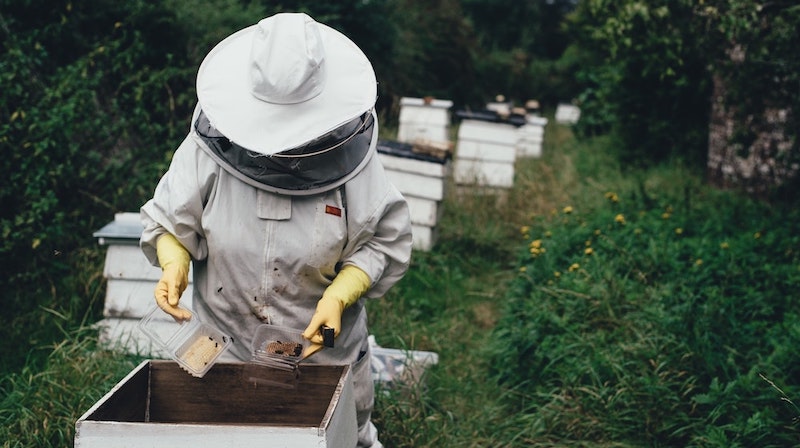
Bee Feed
Sugar Syrup
During times when nectar sources are scarce, providing sugar syrup can help sustain your bees. Sugar syrup is a mixture of water and sugar, usually in a 1:1 or 2:1 ratio. It provides carbohydrates for the bees, helping them survive and maintain their hive strength. Sugar syrup can be fed using various types of feeders, such as entrance feeders or top feeders.
Pollen Substitute
pollen substitute is a protein-rich feed that is given to bees when natural pollen sources are limited. It helps boost brood production and overall colony health. Pollen substitute can be provided in the form of patties or powder, which can be placed inside the hive or on the frames. Ensure you follow the recommended dosage and feeding schedule to effectively support your bees’ nutritional needs.
Probiotics
Just like humans, bees can benefit from probiotics too. Probiotics for bees help promote gut health and strengthen their immune system. They can be provided in the form of supplements or additives that can be mixed with sugar syrup or pollen substitute. Probiotics contribute to overall hive health and can help reduce the incidence of diseases and pests.
Hive Maintenance
Beehive Stand
A beehive stand is a structure that raises the beehive off the ground, providing stability and protection against pests. It also helps to improve hive ventilation and reduces the risk of moisture buildup. Beehive stands are typically made of wood, metal, or concrete blocks and should be sturdy enough to support the weight of the hive.
Mouse Guard
To protect your hive from unwanted visitors, such as mice or other small pests, a mouse guard is essential. A mouse guard is a metal or plastic grille that is placed over the hive entrance, allowing bees to pass through while preventing larger animals from entering. It helps to secure the hive during colder months when rodents may seek shelter.
Entrance Reducer
An entrance reducer is a useful accessory that allows you to adjust the size of the hive entrance. It prevents robbing by other bees or pests, especially during periods when food sources are limited. Entrance reducers are typically made of wood or plastic and have different settings to accommodate the strength and population of your colony.

Bee Health
Varroa Mite Treatment
Varroa mites are one of the most significant threats to honeybee colonies. Treating your hives for varroa mites is crucial to maintain a healthy bee population. Various treatment methods are available, including chemical treatments, organic treatments, and integrated pest management techniques. It is important to regularly monitor your hives for mite infestations and take appropriate action to protect your bees.
Hive Beetle Trap
Hive beetles can cause significant damage to a bee colony if left untreated. Using hive beetle traps is an effective way to control their population. Beetle traps are usually placed between the frames, and they contain a substance that attracts and traps the beetles. Regularly checking and emptying the traps will help prevent infestations and keep your bees safe.
Apiary Hygiene Products
Maintaining proper hygiene in your apiary is vital for ensuring the health and well-being of your bees. Apiary hygiene products include cleaners and disinfectants for hive components, such as hive bodies, frames, and tools. Regularly cleaning and sanitizing your equipment helps prevent the spread of diseases and parasites between colonies.
Educational Resources
Beekeeping Books
For aspiring beekeepers, books are a valuable source of knowledge and guidance. There are numerous beekeeping books available that cover various aspects of beekeeping, from beginner’s guides to advanced techniques. Look for books written by experienced beekeepers or certified beekeeping associations for reliable and comprehensive information.
Online Courses
Online beekeeping courses are a convenient way to learn beekeeping at your own pace. These courses cover a wide range of topics, from bee anatomy and behavior to hive management and honey harvesting. Look for courses offered by reputable beekeeping organizations or certified instructors to ensure you receive accurate and up-to-date information.
Local Beekeeping Associations
Joining a local beekeeping association is an excellent way to connect with experienced beekeepers in your community. These associations often offer workshops, mentorship programs, and hands-on training sessions to help you learn the ropes of beekeeping. Being part of a beekeeping community provides valuable support and resources as you embark on your beekeeping journey.
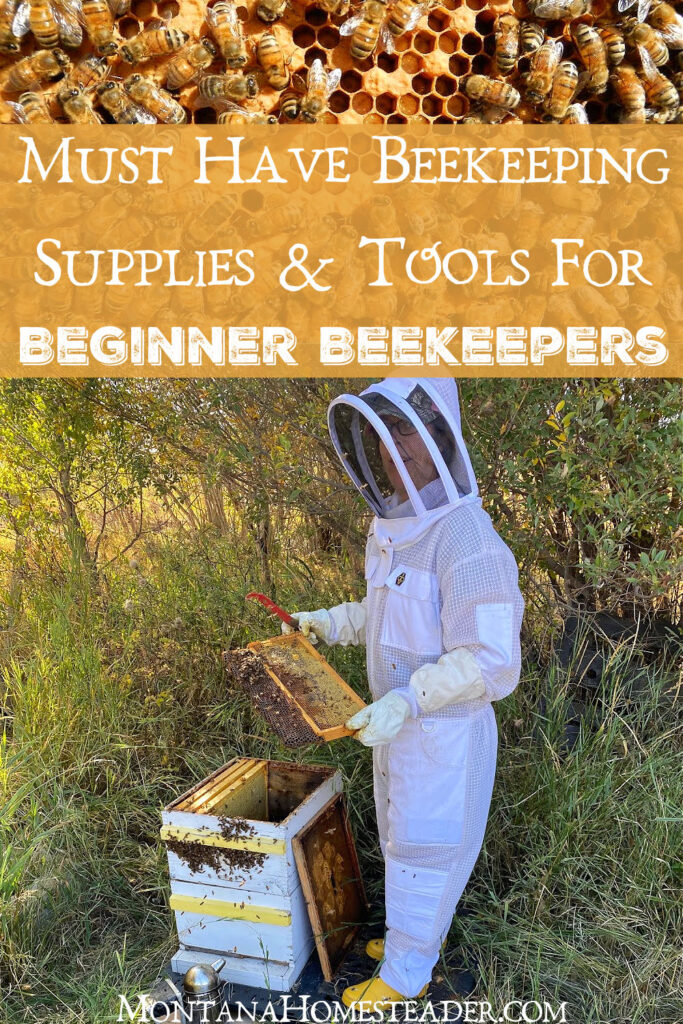
Transportation and Storage
Beehive Transportation
If you need to move your beehives, proper transportation is essential to keep your bees safe and secure. Use specialized hive carriers or straps to secure the hive components together. Ensure that the beehive is well-ventilated during transportation to prevent overheating or stress to the bees.
Honey Container
When it comes to storing and selling your honey, choosing the right honey container is important. Glass jars are commonly used for honey storage as they are non-reactive, airtight, and allow customers to see the honey’s color. Plastic containers are also an option, but they should be food-grade and capable of preserving the honey’s quality. Consider the size of your honey harvest when selecting the appropriate container.
Storage Containers
Beekeepers often need storage containers for various purposes, such as storing beekeeping equipment and supplies. These containers should be durable, waterproof, and able to protect their contents from pests and vermin. Look for containers with secure lids and consider stackable options to optimize storage space.
Beekeeping Safety
First Aid Kit
Accidents can happen, even in beekeeping. Having a fully stocked first aid kit on hand is essential for addressing any injuries or bee stings. Make sure your first aid kit includes bandages, antiseptic ointment, tweezers, and bee sting remedies such as antihistamines or epinephrine auto-injectors, in case of severe allergic reactions.
Allergen Kit
Beekeepers should be prepared for potential allergic reactions to bee stings. An allergen kit should contain any prescribed medications or emergency treatments for severe allergic reactions. It is highly recommended to seek proper medical advice and carry an EpiPen or other auto-injectors if you have a known bee sting allergy.
Fire Extinguisher
Fire safety is crucial when working with beehives, especially if you are using smokers or other heat-emitting tools. Keep a fire extinguisher nearby in case of any accidental fires. Make sure you know how to use the fire extinguisher correctly and have it serviced regularly to ensure its effectiveness.
Starting Strong: Top Equipment Choices for Aspiring Beekeepers!
As an aspiring beekeeper, having the right equipment is key to starting your beekeeping journey on the right foot. From protective clothing to hive components, tools and accessories to honey extraction equipment, proper bee feed to hive maintenance, and bee health to transportation and storage, there are various essential items you’ll need. By investing in high-quality equipment and following best practices, you can ensure the safety and success of your beekeeping venture. Remember to always prioritize the well-being of the bees, as they are the heart and soul of your apiary. Happy beekeeping!
